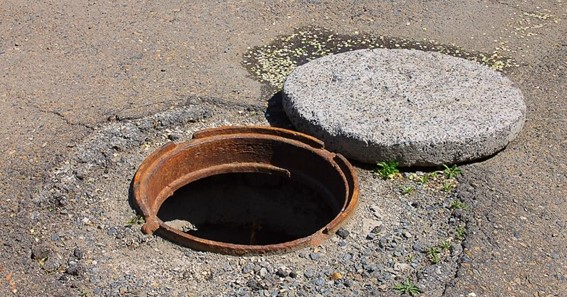Are you curious to know what is a manhole? You have come to the right place as I am going to tell you everything about a manhole in a very simple explanation. Without further discussion let’s begin to know what is a manhole?
In our urban landscapes, we often encounter small, circular structures embedded in the ground, commonly known as manholes. These unassuming access points play a crucial role in maintaining the functionality and integrity of our infrastructure systems. In this blog post, we will explore the concept of a manhole, its purpose, and the vital functions it serves in our cities and communities.
What Is A Manhole?
A manhole is a vertical, cylindrical structure, usually made of concrete or metal, that provides access to underground utility systems, such as sewage, stormwater, water supply, telecommunications, and electrical networks. It consists of a cover or lid at ground level and a shaft that extends downwards, allowing personnel to enter and perform maintenance, repairs, inspections, and other necessary tasks.
Purpose And Functions:
-
Access to Underground Systems:
The primary purpose of a manhole is to provide access to underground utility systems for maintenance and repair activities. This includes tasks like inspecting pipelines, removing blockages, conducting repairs, and installing or replacing components. By offering a safe and controlled entry point, manholes facilitate efficient and effective maintenance of the underground infrastructure.
-
Monitoring and Inspections:
Manholes allow for regular monitoring and inspections of utility systems. Through these access points, professionals can assess the condition of pipes, cables, and other components, identify potential issues or damages, and implement proactive measures to maintain the integrity and functionality of the infrastructure. Regular inspections help prevent system failures, reduce downtime, and ensure public safety.
-
Safety and Emergency Access:
Manholes serve as emergency access points during critical situations. In the event of emergencies, such as gas leaks, water main breaks, or electrical faults, trained personnel can quickly access underground systems through manholes to assess the situation, address the problem, and safeguard public safety.
-
Utility System Expansion and Upgrades:
Manholes are essential when expanding or upgrading underground utility systems. They provide entry points for installing new pipes, cables, or equipment, as well as facilitating connections to existing infrastructure. Manholes enable seamless integration and expansion of utility networks, allowing for improved service delivery and capacity for future needs.
-
Ventilation and Gas Management:
In certain utility systems, such as sewer and stormwater networks, manholes also play a role in ventilation and gas management. They allow for the release of gases, such as methane or hydrogen sulfide, which can accumulate in the underground systems. Proper ventilation helps maintain safe working conditions for maintenance personnel and prevents the build-up of harmful gases.
Conclusion:
Manholes are inconspicuous yet essential elements of our urban infrastructure. By providing access to underground utility systems, they enable maintenance, repairs, inspections, and emergency response activities. Manholes contribute to the efficient functioning, expansion, and safety of utility networks, ensuring the reliable delivery of services that are vital to our daily lives.
Next time you come across a manhole in your city, take a moment to appreciate its significance. These unassuming structures quietly support the complex web of infrastructure that keeps our communities running smoothly.
Find out more knowledgable facts by visiting Whatismeaningof
FAQ
What Exactly Is A Manhole?
A manhole is an access point inside the sewer line for materials and workers. It is the most important part of the sewer line because it eliminates the need for digging, and it is also known as an inspection chamber or unit.
What Is The Function Of A Manhole?
To inspect, maintain, and remove any obstruction parts discovered in the sewer line.
At a junction point, for connecting sewer lines for reversing the direction or alignment of a sewer line
To alter the gradient of a sewer line
What Is A Manhole?
An entry point for workers and materials inside the sewer line is known as a manhole. It is the most crucial part of the sewage line and is also referred to as an inspection chamber or unit since it entirely negates the necessity for digging.
What Is The Purpose And Function Of A Manhole?
Manholes are installed to do maintenance, conduct inspections, and remove any obstructions from the sewer line. It is used for tying a sewer pipe together at a junction, adjusting a sewer line’s alignment or direction, and modifying a sewer line’s gradient.
I Have Covered All The Following Queries And Topics In The Above Article
What Is A Manhole Explosion
What Is A Manhole?
What Is A Manhole For
What Is A Drop Manhole
What Is In A Manhole
Why Manhole Is Round
Purpose Of Manhole
Drainage Manhole
Manhole Depth
Difference Between Manhole And Inspection Chamber
What Is A Manhole
Why is it called manhole
What is a manhole short answer






